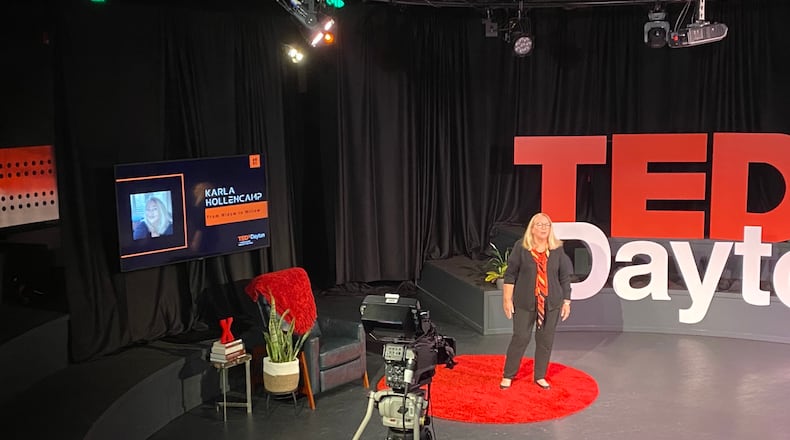TEDxDayton is in its ninth year. Organizers Wynn, Bridget Hutt and Luther Palmer all are past speakers at TEDxDayton.
Each of the 14 speakers this year had about 10 minutes. The talks ranged from a University of Dayton professor talking about satellites to a drag queen.
The event was filmed in front of a small live audience. The videos will be live-streamed on the TEDxDayton website and on its YouTube page sometime in December, the co-chairs said. The videos will be streamed over two days. Organizers said final dates will be announced at a later time.
2021 will be the second year the team has done this due to the pandemic.
One speaker, Karla Hollencamp, talked about her widowhood journey. After her husband died in 2015, Hollencamp said it took a while to define herself as someone other than a wife. But she found herself.
She stopped thinking of herself of a widow and began to think of herself as a willow, she said.
“I think of the trees, long history and symbolism in spiritualism, the willow tree is one of the few trees that can bend in outrageous poses, without breaking,” Hollencamp said
Josh Sweigart, a Dayton Daily News investigative reporter, talked about how local news has lost revenue in the past few decades. It’s caused a crisis in journalism, with almost 26% fewer journalists in America compared to 2008, and precipitated the rise of “ghost papers,” which have little to no staff and run press releases rather than holding local officials accountable.
“You see, historically, newspapers are funded almost entirely by advertisers,” Sweigart said. “No more. Now they desperately need subscribers or in the nonprofit model, donors.”
Ryan Ivory, a social worker who works in health care, discussed racism as a public health crisis. Ivory noted many medical schools do not teach doctors how to deal with implicit bias, where people make assumptions about patients based on external factors like race. This can be life threatening, especially for people of color.
“Racism is a public health crisis,” Ivory said. “The connections between race and health are complex, interwoven.”
About the Author


